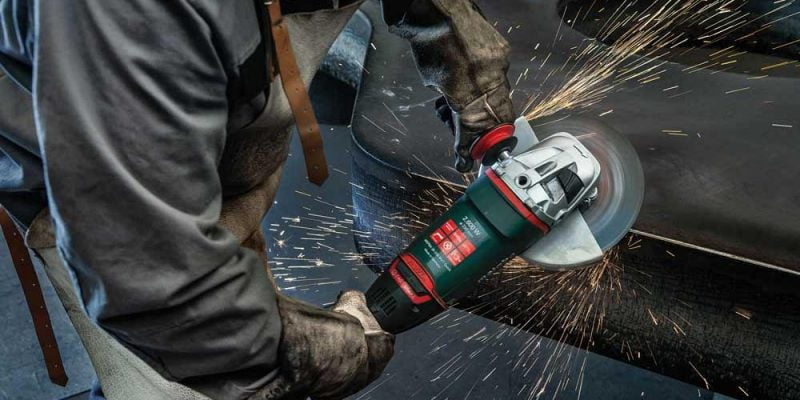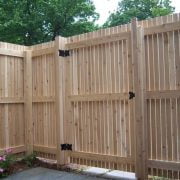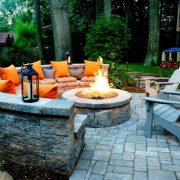There are a handful of tools that every DIY enthusiast should have in their tool box, if they want their projects to not only go smoothly and efficiently, but also ensure the best quality outcome. Power tools are especially crucial in this and one of those tools every handyman should have in their repertoire is an angle grinder to small tools like leaf guard or to solve stringing wind chimes, of course, the later task will require more logic.
It can be used for a plethora of different projects, materials, and finishes. But like with every other tool, it is of the utmost importance that you need to understand the basic guidelines for using an angle grinder safely and the safety procedures involved. So, let’s start with the basics!
What is an angle grinder?
An angle grinder is a powerful tool mainly used in metalworking and construction, that can cut and grind dense metal-based materials but can also sand and polish different surfaces with various changeable discs. Getting a cordless angle grinder offers more versatility and flexibility than its cabled alternative, especially when more precise tasks are needed. Different sizes for different tasks are available, as well as electric grinders for more powerful and larger works and pneumatic grinders that offer smaller and thus more intricate options.
What can I cut?
As stated above, angle grinders are often used to cut metal – bolts, pipes or metal sheets made out of aluminium, iron or even steel can be comfortably sliced. Use an abrasive metal-cutting disc with light pressure to slice through the metal material. You will need a flapper disc if you are cutting steel.
Furthermore, your angle grinder is able to cut through concrete, pavers and bricks and even limestone or granite! These materials are much harder and thicker to cut however, and you may notice a lot more dust and fumes with this material. Wearing personal protective equipment when working in DIY projects is always recommended, but especially when working with power tools and difficult materials like these, please be responsible in wearing gear like safety goggles and a face mask. A segmented ring disc will also help to cool down the blade and squeeze out the dust, as well as gently wetting the material beforehand. Be aware of your tool overheating!
What can’t I cut?
Many people ask whether you can use an angle grinder to cut wood – after all it seems like a convenient tool to work with when it comes to cutting. Well technically, yes, you can. However, most of the professionals would strongly advise against it. You should not use an abrasive metal cutting disc on a combustible material like wood. Metal and concrete materials have much more resistance than wood. If you use the angle grinder to cut wood, even the slightest twist of your wrist could alter its course and you could end up with catastrophic injuries from an out-of-control angle grinder. This is called a “kickback” and can and is the cause of many serious and even fatal accidents when using the angle grinder irresponsibly. In a kickback the grinder grabs or jams with the material being worked on and in a sudden thrust kick backwards towards you. Most likely, this results in you losing control over the grinder completely, having it fly or fall into you or others nearby. Always make sure to use the correct tools for the correct materials – and whilst an angle grinder surely is a versatile tool, wood does not belong in its repertoire.
Safety and PPE
As the angle grinder operates at high speeds and with dense materials, working with it requires responsible behaviour and knowledge about your tool – as well as wearing the correct safety gear to protect yourself from harm. Remember, a tool designed to cut through steel will have no issues cutting through bones.
As you are working with metal, naturally sparks will be flying across you and your workshop. On top of making sure that you are wearing protective glasses and clothes, have the space around you free of objects, especially inflammable ones. Have a fire extinguisher on hand (another thing that should be in every DIY household!) – just in case things turn south.
Always wear protective gear to keep your eyes, ears, lungs and hands safe at all times. Your gear should be the right size and in good condition. If you’re not sure what PPE you need to wear, do a little research on the risks of your power tool collection. As for angle grinders, you will need to be fully equipped with glasses, gloves, masks and ear plugs, if you want to keep risks at a minimum. Also make sure to not wear loose clothing and have long hair tied back.
Maintenance
Not only does the right maintenance of a tool extend its lifetime enormously (a well-kept tool can live on for generations), but it also further reduces risks for accidents. Breakage is inherent when working with abrasive wheels, so keeping an eye on the condition of your disks and exchanging them once you see signs of tear and wear is a must. It is also a given to only use them in the correct speed and for the correct material – don’t worry, you will find all the information needed printed onto the disks themselves.
Especially if you have a corded angle grinder, but with portable devices as well – check regularly for signs of breakage. Don’t use a tool if you are not sure it is completely intact anymore, so prevent electric shocks on top of the above-mentioned risks.
It is also important to clean your angle grinder after every use and store it in a dry location. Deep cleaning the angle grinder is another challenge entirely and requires some deeper knowledge! Most well-known brands however offer services to clean a tool for a little fee or even off their warranty, so definitely have a look into that.
Angle grinders can be incredibly helpful in DIY tasks, resulting in cleaner and higher quality results and should be part of every enthusiast’s kit. Getting to know the tool and using it responsibly though, is key – as with so many little helpers in our sheds.














Comments